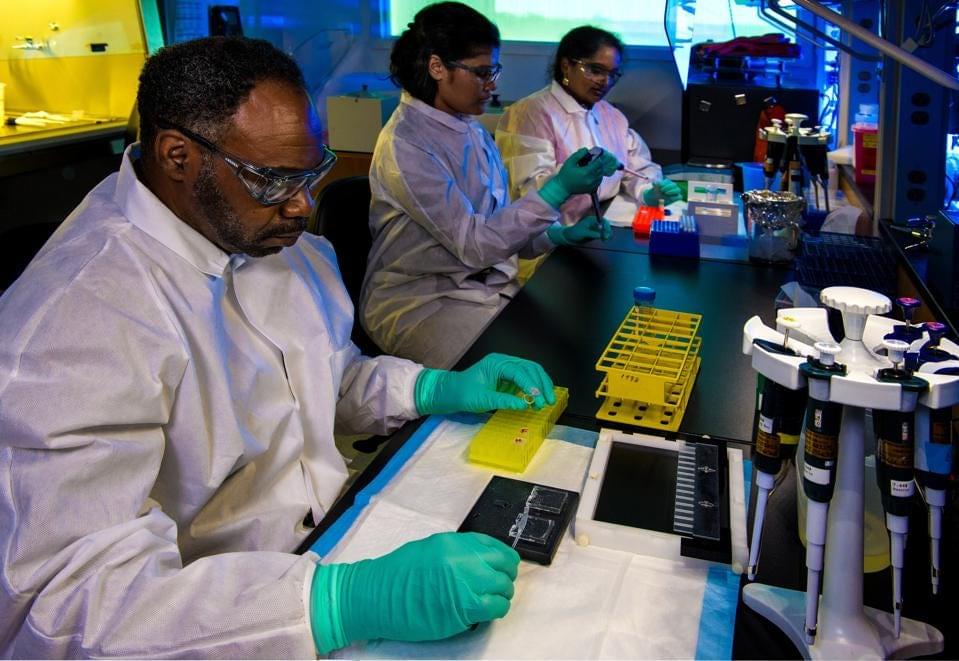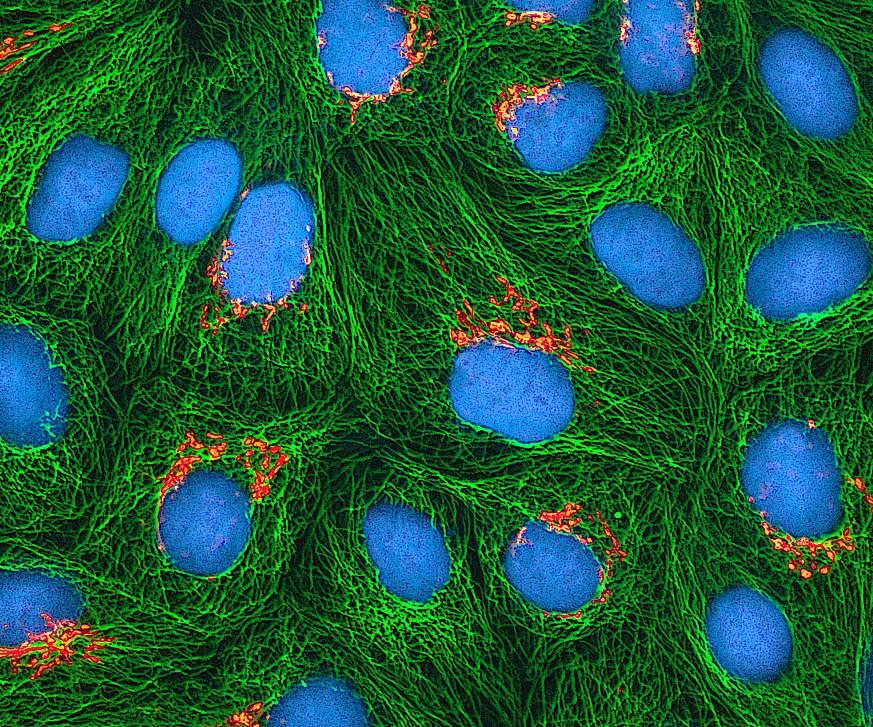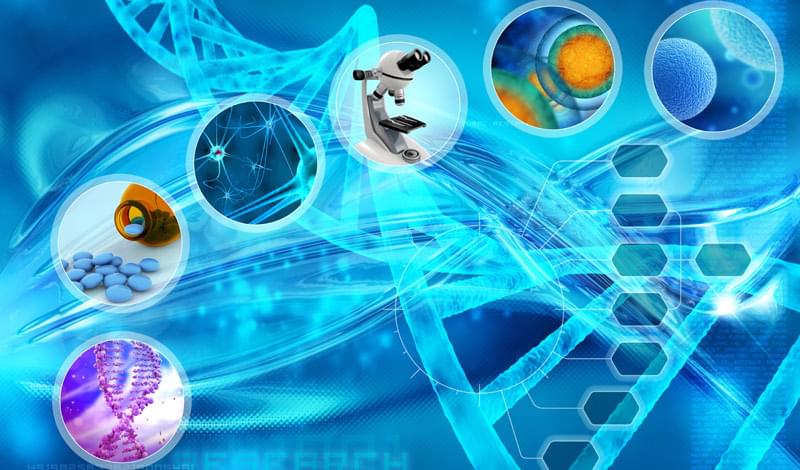Scientists say it could represent a bridge between freshwater and marine species.



A team of researchers publishing in Aging have shown that resveratrol reduces inflammation and partially restores function in a rat model of spinal injury.
In line with previous research
This is far from the first study that aimed to use approaches associated with aging research in order to spur regeneration. For example, we have previously reported that removing senescent cells aids in spinal cord regeneration in a rodent model, at least partially because of the associated reduction in inflammation.

Recent advancements in biotechnology have immense potential to help address many global problems; climate change, an aging society, food security, energy security, and infectious diseases.
Biotechnology is not to be confused with the closely related field of biosciences. While biosciences refer to all the sciences that study and understand life, biology, and biological organisms, biotechnology refers to the application of the knowledge of biosciences and other technologies to develop tech and commercial products. Biotechnology is the application of innovation to biosciences in a bid to solve real-world medical problems.
Throw Artificial Intelligence into the mix and we suddenly have a really interesting pot of broth. Several AI trends have already proven beneficial to the development of biotechnology. Dr. Nathan S. Bryan, an inventor, biochemist and professor, who made a name for himself as an innovator and pioneer in nitric oxide drug discovery, commercialization, and molecular medicine, offers his insights on these contributions.

This type of cell could lead to an unlimited cell division in human cells aka a forever lifespan 😃 #immortality
“The sequencing and posting of the HeLa genome brought into sharp relief important ethical and policy issues,” said Dr. Collins. “To understand the family’s perspectives, we met with them face to face three times over four months, and listened carefully to their concerns. Ultimately, we arrived at a path forward that respects their wishes and allows science to progress. We are indebted to the Lacks family for their generosity and thoughtfulness.”
The HeLa Genome Data Use Agreement
The new controlled access policy for full genome sequence data from HeLa cells will give the Lacks family the ability to have a role in work being done with the HeLa genome sequences and track any resulting discoveries. Under the policy, biomedical researchers who agree to abide by terms set forth in the HeLa Genome Data Use Agreement will be able to apply to NIH for access to the full genome sequence data from HeLa cells. Along with representatives from the medical, scientific, and bioethics communities, two representatives of the Lacks family will serve on NIH’s newly formed, six-member working group that will review proposals for access to the HeLa full genome sequence data. In addition, NIH-funded researchers who generate full genome sequence data from HeLa cells will be expected to deposit their data into a single database for future sharing through this process. The database study page will be accessible after the embargo lifts at this url: http://www.ncbi.nlm.nih.gov/projects/gap/cgi-bin/study.cgi?s…0640.v1.p1. Other investigators will be encouraged to respect the wishes of the family and do the same. Importantly, all researchers who use or generate full genomic data from HeLa cells will now be asked to include in their publications an acknowledgement and expression of gratitude to the Lacks family for their contributions.
Circa 2018
The secrets to immortality may lie in an unexpected place — fruit fly stem cells. Researchers led by Howard Hughes Medical Institute (HHMI) Investigator Yukiko Yamashita have found that some stem cells have a genetic trick to remain young forever across generations. While some areas of the fruit fly genome get shorter as they age, some reproductive cells are able to fix that shortening. Once observed only in yeast, this work, reported in eLife, has revealed more about aging, and how some cells can avoid it.
This work focused on critical genes in ribosomal DNA, rDNA. Ribosomes are cellular organelles that act as protein factories. That rDNA is repeated in several areas of the genome because many ribosomes are needed to make all of the proteins the body needs. Five chromosomes each have spots with hundreds of copies of rDNA. However, that type of redundant sequence can be difficult for cells to replicate accurately every time cell division happens.

“The Rejuvenome Project was launched to target these bottlenecks,” said Nicholas Schaum, PhD, Scientific Director at the Astera Institute. “We hope to do that by characterising treatments and regimens, both established and newly invented, for which we have reason to believe improve health and longevity.”
Previously, Schaum worked as a researcher at Stanford University, California, in conjunction with the Chan Zuckerberg BioHub. He organised dozens of labs and hundreds of researchers into a consortium that produced cell atlases, to characterise aging tissues in mice. These cell atlases became the foundation for Schaum’s further studies into whole-organ aging and single-cell parabiosis.
The Rejuvenome Project is expected to be complete in 2028. All wet lab operations will be centred at Buck, while the dry lab computational aspects will reside at the Astera Institute.

Circa 2019 😀
Because they can process massive amounts of data, computers can perform analytical tasks that are beyond human capability. Google, for instance, is using its computing power to develop AI algorithms that construct two-dimensional CT images of lungs into a three-dimensional lung and look at the entire structure to determine whether cancer is present. Radiologists, in contrast, have to look at these images individually and attempt to reconstruct them in their heads. Another Google algorithm can do something radiologists cannot do at all: determine patients’ risk of cardiovascular disease by looking at a scan of their retinas, picking up on subtle changes related to blood pressure, cholesterol, smoking history and aging. “There’s potential signal there beyond what was known before,” says Google product manager Daniel Tse.
The Black Box Problem
AI programs could end up revealing entirely new links between biological features and patient outcomes. A 2019 paper in JAMA Network Open described a deep-learning algorithm trained on more than 85,000 chest x-rays from people enrolled in two large clinical trials that had tracked them for more than 12 years. The algorithm scored each patient’s risk of dying during this period. The researchers found that 53 percent of the people the AI put into a high-risk category died within 12 years, as opposed to 4 percent in the low-risk category. The algorithm did not have information on who died or on the cause of death. The lead investigator, radiologist Michael Lu of Massachusetts General Hospital, says that the algorithm could be a helpful tool for assessing patient health if combined with a physician’s assessment and other data such as genetics.
I am pleased to share our most recent video on the “Dementia Safety Study” funded by Maximum Life Foundation and run by IHS, in which BioViva did the data analysis. This treatment shows promise for the millions of people who have dementia today. Though not a cure, it is a step in the right direction.
Can gene therapy delay or reverse Alzheimer’s and other dementias?
Want to learn more about BioViva? Visit: https://bioviva-science.com/
Interested in aging tests? https://bioviva-science.com/collections/products.
Facebook https://www.facebook.com/BiovivaScience.
Twitter https://twitter.com/BioVivaScience.
Instagram https://www.instagram.com/biovivascience.
LinkedIn https://www.linkedin.com/in/liz-parrish.
“Hubble is the only telescope that has the kind of temporal coverage and spatial resolution that can capture Jupiter’s winds in this much detail”
Over the past 100 years, however, the cyclone has been dwindling, but recent observations with Hubble show that the wind speeds may be picking up again. Is this just temporary, or will the storm return to its former glory?
Using the Hubble Space Telescope, a team of astronomers has been monitoring the Great Red Spot for over a decade. They discovered that the wind speed of the outermost edge of the storm, known as the high-speed ring, has picked up speed by eight percent between 2009 and 2020.
“When I initially saw the results, I asked, ‘Does this make sense?’ No one has ever seen this before,” said Michael Wong of the University of California, Berkeley, who led the analysis. “But this is something only Hubble can do. Hubble’s longevity and ongoing observations make this revelation possible.”
We have achieved strong, fast, power-dense, high-efficiency, biomimetic, soft, safe, clean, organic and affordable robotic technology. Dumbbell weights 7 kg (15,6 lbs) 0 forearm with hand only 1 kg (2,2 lbs).
This artificial muscles robotic arm is operated by water and consumes 200W at peak. We invent and produce portable power supply and our own electro-hydraulic mini valves to have complete controllability of speed contraction and compress the whole powering system (for a full body) inside humanlike robot torso.
At this moment our robotic arm is operated only by a half of artificial muscles when compared to a human body. Strongest finger-bending muscle still missing. Fingers are going to move from left to right but they don’t have muscles yet. Metacarpal and left-to-right wrist movement are also blocked. This version has a position sensor in each joint but they are yet to be software-implemented. We are going to add everything mentioned above in the next prototype.
The movement sequence was written and sent by simple commands to a hand. We wish to develop a platform for reinforcement learning purposes, prosthetic arms and ultimately a full humanoid robots to serve people for fun, as butlers, cleaners, chauffeurs, construction workers (also in space) and even achieve human immortallity by transplanting the brain into the machine.
If you want to see updates on the project, please share, like, comment and hit that subscribe button. You can also support us directly on Patreon:
https://www.patreon.com/automatonrobotics.
Wesprzyj Rodaku nasz projekt na Patronite: